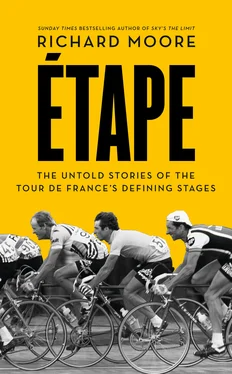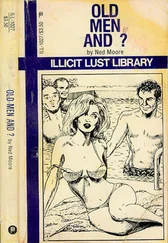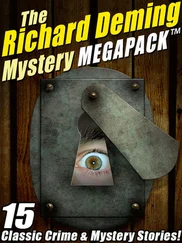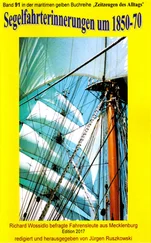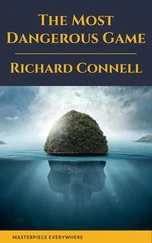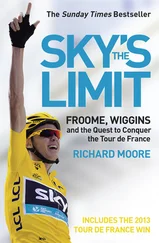1 ...6 7 8 10 11 12 ...18 At the finish in Roubaix, Hinault arrived with the leaders, including specialists such as Moser, De Vlaeminck and Kuiper. And he won. ‘It was the last time I rode,’ Hinault says with satisfaction. 1‘I would have gone back and won another Roubaix if Félix Lévitan had let me ride the Tour of America. But he didn’t, and I said, “In that case, I’m not doing Roubaix any more.” If he’d said I could have gone to the Tour of America, I would have won Roubaix again to thank him.’
So he would not just have ridden Paris–Roubaix, he would have won. At the time Hinault was adamant that he would never again ride the cobbles: ‘I have no intention of riding Paris–Roubaix, or the Tour of Flanders, either this year or in the future. Roads like that have nothing to do with classic racing.’
He had made his point. And as he drains the dregs of his cappuccino, he reminds us, in his brusque but amused manner, and with a typically Hinault-esque combination of pride and contempt: ‘How many riders today who are capable of winning the Tour de France even ride Paris–Roubaix?’
Hinault shrugs and answers his own question: ‘None.’
Classement
1Bernard Hinault, France, Renault-Gitane, 236.5km, 8 hours, 3 minutes, 22 secs
2Hennie Kuiper, Holland, Peugeot-Esso-Michelin, same time
3Ludo Delcroix, Belgium, IJsboerke-Gios, at 58 secs
4Yvon Bertin, France, Renault-Gitane, at 2 minutes, 11 secs
5Guido van Calster, Belgium, Splendor-Admiral, s.t.
6Sean Kelly, Ireland, Splendor-Admiral, s.t.
1 Hinault is mistaken. He returned one more time, in 1982, placing 9th.
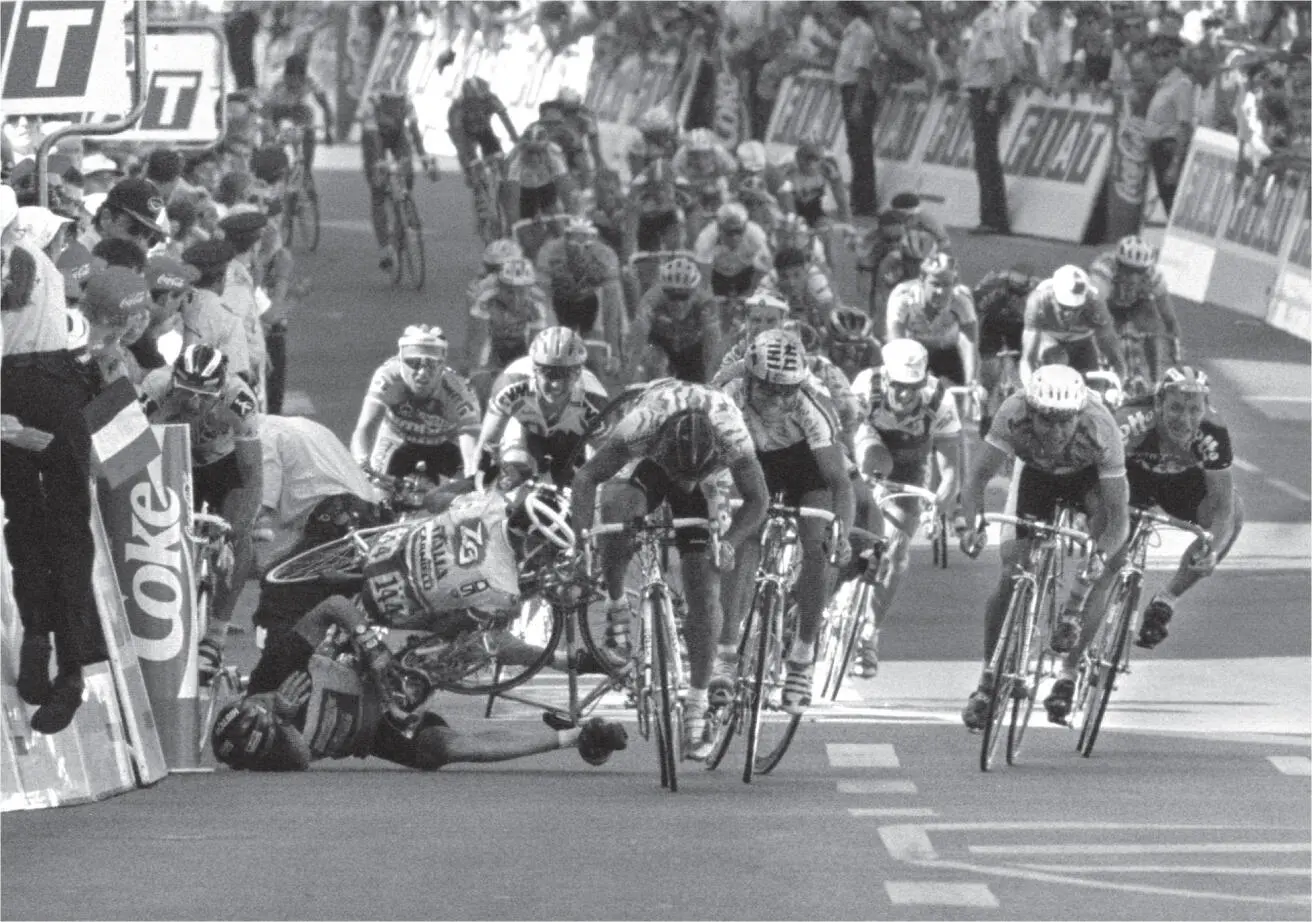
Wilfried Nelissen Lands; Djamolidine Abdoujaparov, Head Down, Sprints for the Line.

1 July 1994. Stage One: Lille to Armentières
234km. Flat
They are sprinting for the line in Armentières at 70kph: a heaving, jostling bunch, a slightly downhill finish, a right-hand bend with 400 metres to go, another right-hander with 150 to go; then the road kicks slightly up; all heads go down …
Phil Liggett, the TV commentator, is shouting, his voice shrill: ‘We’ve got Ludwig up in second place … The Novemail team still trying to bring their man through, and Abdoujaparov is here! He’s on the wheel of Nelissen … Abdoujaparov is swinging from left to right, this will be a shoulder-to-shoulder battle … As they come up to the line, Nelissen …
‘Oh, and they’ve gone! They’ve gone! One after the other!’
There’s a huge noise at the moment of impact. A collective gasp, a roar: the sound of shock.
As Liggett said, they were there, shoulder-to-shoulder, and then they were gone. They were gone.
* * *
Old golfers never retire. They just lose their balls. So the joke goes. A variation of this joke could be made about Belgian cyclists – that they never retire, that is. The sport of cycling is so big in Belgium, the scene so vast, that it seems to absorb all the ex-pros. Retired riders become team directors, race organisers, national selectors, they run amateur teams, or, in Freddy Maertens’ case, they are employed in the Flanders Cycling Museum.
Not Wilfried Nelissen, however.
Nelissen seems to have disappeared. ‘Wilfried Nelissen you want? That’s a tough one. Give me a bit of time,’ says one Belgian journalist. Another one first expresses surprise that I want to contact him, then admits it might not be easy.
Nelissen was the third man in a golden generation of sprinters, though he tended to be obscured by the shadows cast by the other two, the flamboyant Mario Cipollini and the lethal Djamolidine Abdoujaparov. Cipollini – ‘Super Mario’ as he liked to be known, ‘Il Magnifico’ as he liked even more to be known – was an Italian playboy and showman who became ever more outrageous, arriving at the start of one stage of the Tour, in 1999, dressed as Julius Caesar in a chariot pushed by his team-mates. (In case you were wondering, it was Caesar’s birthday.) On other occasions, Cipollini wore one-off, non-regulation skinsuits: tiger-print, zebra-print, a translucent muscle-suit. In retirement, he hasn’t changed much. During the 2013 Tour de France in Corsica, I drove past a fit-looking forty-six-year-old riding his bike with his top off and an impressive all-over tan. It could only be Cipollini.
Abdoujaparov was his polar opposite: a dour Uzbek. He was the Tashkent Terror, a stern-faced warrior. While Cipollini was tall, bronzed and dashing, with his chiselled jaw and mouth full of white teeth, the dark-haired, razor-cheeked Abdoujaparov was compact, powerful and dangerous; outrageously fast but a menace in a bunch sprint. There was nothing malicious about Abdou. It was just that with elbows out and head down there was no telling where he would go; he weaved left, right, seemingly out of control.
But the main victim of Abdou’s erratic sprinting was Abdou himself. He was involved in one of the most infamous crashes in Tour history, on the Champs-Élysées in 1991. Head down, he was heading for the win when he veered dramatically, and wholly unnecessarily, to the right, colliding with one of the Coca-Cola advertising bollards, which jutted out from the barriers. It was as if his bike was swiped from under him. It was stopped dead by the obstacle while the sprinter was catapulted from his bike and tossed to the road like a rag doll.
Motionless, he lay in a crumpled heap, where he was hit square-on by another rider. Robert Millar, who was in the bunch as they streamed across the line, said later that it looked as though Abdou had fallen out of a plane. It was the final stage. He was in the green jersey. He had to finish. Somehow he was helped across the line and then loaded into an ambulance, an oxygen mask strapped to his face.
Abdou had a quiet year in 1992. But in 1993 he was back, and at the top of his game. So was Cipollini. And so was Nelissen, who had more in common with Abdoujaparov than Cipollini in the looks department. Dark-haired, with thick eyebrows over pale grey-blue eyes, his mouth struggling to contain tombstone-like teeth, Nelissen resembled a boxer who had lost a few fights. He looked like a typical Belgian hardman. He came from Tongeren, the oldest town in Belgium and, more significantly as far as cycling is concerned, located in the south-eastern corner of Flanders. Any athletic child in Flanders has little chance of not growing up to be a cyclist.
Nelissen turned professional in 1991, aged nineteen, with the Weinmann team, switching to Peter Post’s Panasonic (which became Novemail) in 1992. Known as Jerommeke , Nelissen came to prominence during his first year under Post: a win at Paris–Bourges, two stages at the Tour of Switzerland, two at the Dauphiné Libéré. In 1993 he won the early-season semi-classic, Het Volk, to ensure his celebrity status in his native land, especially in Flanders.
Nelissen’s nickname, Jerommeke , meant nothing to anybody outside Belgium. ‘ Jerommeke is a cartoon character, with unlimited strength and speed,’ explains Jan-Pieter de Vlieger, a journalist with Belgium’s top daily, Het Nieuwsblad . ‘He featured in the Suske and Wiske series, Belgium’s most popular comic books, by Willy Vandersteen, the acclaimed cartoonist.’ Sometimes you see the Jerommeke nickname suffixed with ‘Woefie’ – the sound a dog makes? De Vlieger isn’t sure. He sends a picture of Jerommeke : like a Belgian Desperate Dan, without the cowboy outfit. Beyond Flanders, Nelissen acquired another name: the Bulldog. To his team-mates, meanwhile, he was Willie.
Читать дальше
